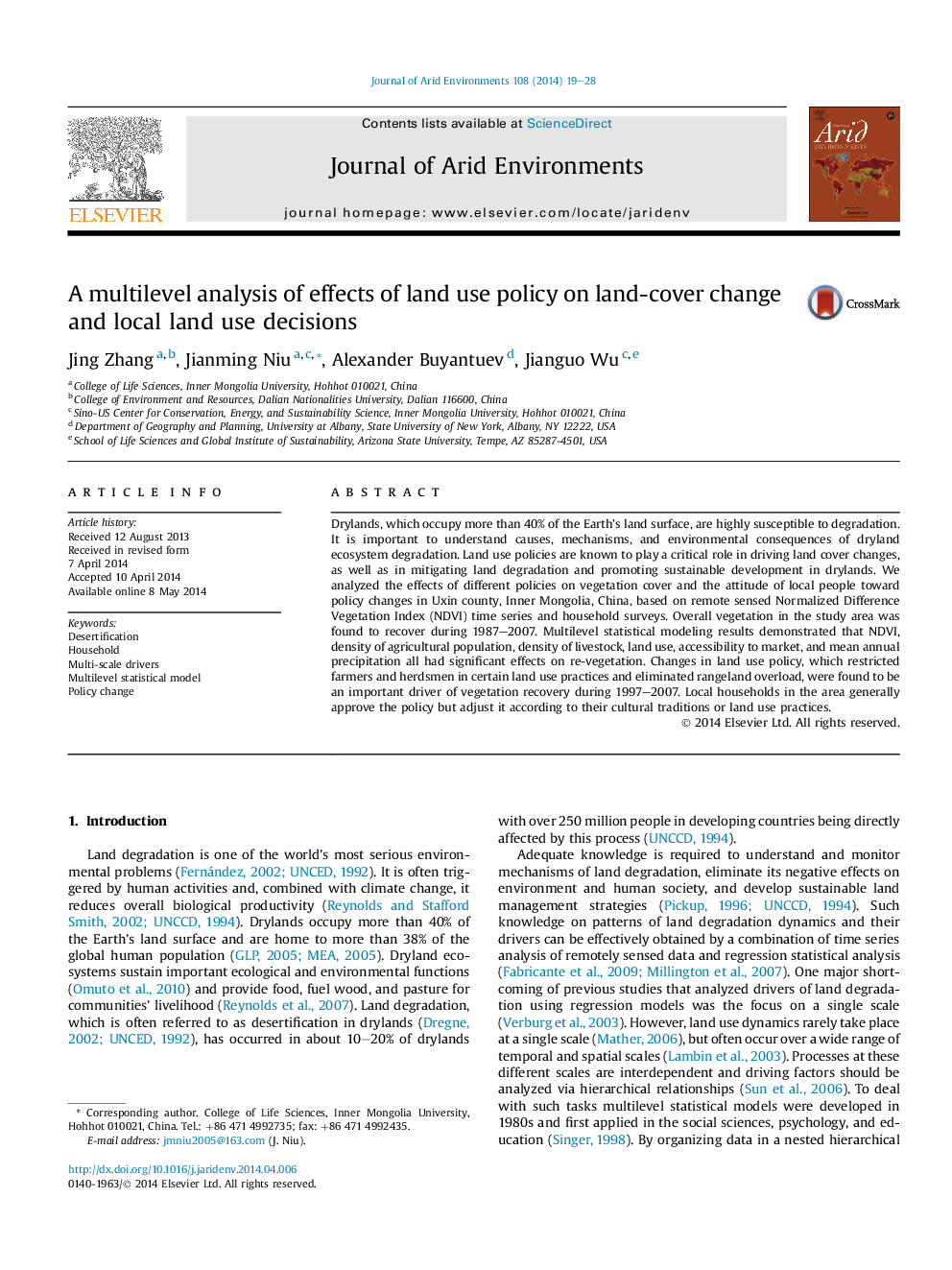| Article ID | Journal | Published Year | Pages | File Type |
|---|---|---|---|---|
| 4392965 | Journal of Arid Environments | 2014 | 10 Pages |
•Multilevel statistical modeling was used to understand multi-scale desertification.•Climate and human factors contributed to desertification changes at different scales.•Land use policy restricted farmers and herdsmen in certain land use practices.•Local households accommodated the policy according to their cultural traditions.
Drylands, which occupy more than 40% of the Earth's land surface, are highly susceptible to degradation. It is important to understand causes, mechanisms, and environmental consequences of dryland ecosystem degradation. Land use policies are known to play a critical role in driving land cover changes, as well as in mitigating land degradation and promoting sustainable development in drylands. We analyzed the effects of different policies on vegetation cover and the attitude of local people toward policy changes in Uxin county, Inner Mongolia, China, based on remote sensed Normalized Difference Vegetation Index (NDVI) time series and household surveys. Overall vegetation in the study area was found to recover during 1987–2007. Multilevel statistical modeling results demonstrated that NDVI, density of agricultural population, density of livestock, land use, accessibility to market, and mean annual precipitation all had significant effects on re-vegetation. Changes in land use policy, which restricted farmers and herdsmen in certain land use practices and eliminated rangeland overload, were found to be an important driver of vegetation recovery during 1997–2007. Local households in the area generally approve the policy but adjust it according to their cultural traditions or land use practices.
